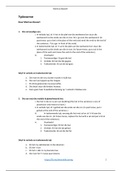Study guide
Tydsvorme (Tye)
- Vak
- Instelling
A description of each type of sentence that you would be required to change the tense of, an explanation of how to do so, an example done for you and questions to do. At the end of the document there are answers to all the questions.
[Meer zien]



